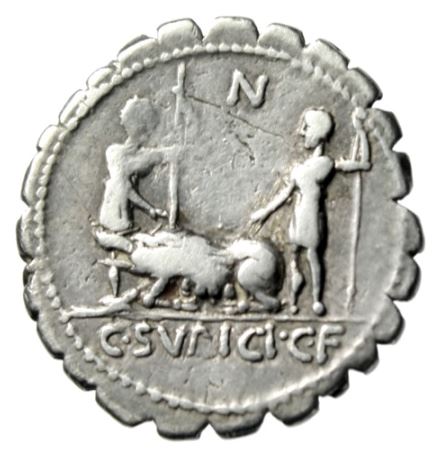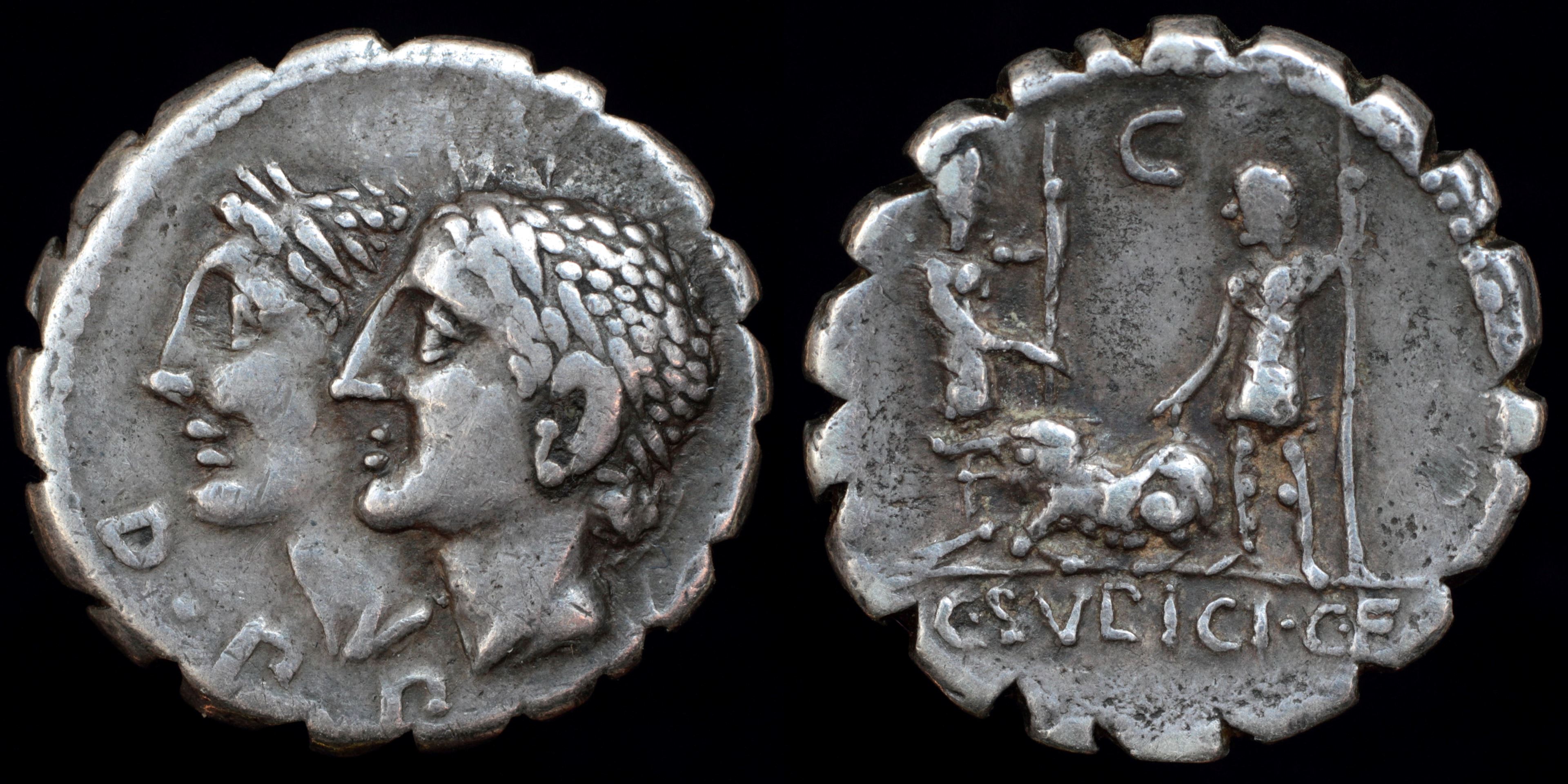The gens Sulpicia was one of the most ancient patrician families at Rome, and produced a succession of distinguished men, from the foundation of the Republic to the imperial period. The first member of the gens who obtained the consulship was Servius Sulpicius Camerinus Cornutus, in 500 BC, only nine years after the expulsion of the Tarquins, and the last of the name who appears on the consular Fasti was Sextus Sulpicius Tertullus in AD 158.


Reverse: Two soldiers (or Dii Penas Publici) standing facing each other, holding spears and pointing at sow which lies between them C C·SV(LP)ICI·C·F
Die Orientation: -
Weight: 3.96 g
The Sulpicii came from Lavinium and both sides of coin are related to it. Di Penates Publici were taken from Troy together with Palladium by Aeneas. When Aeneas fled from Troy Helenus, a son of Priamos, has predicted Aeneas, that he would built a new city where a white sow would cast 30 piglets. Aeneas prepared to sacrifice a pregnant white sow he has brought in his ship for this purpose, but the sow escaped and fled 24 stadiums in the inland, layed down under an oak-tree (or ilex-tree) and casted 30 white piglets. Because of that Aeneas knew that this prophecy too became true and he should built a city here. He sacrificed the 30 piglets and erected a shrine at this place. The new city he called Lavinium referring to Lavinia, daughter of king Latinus. The 30 piglets represented 30 years only after which his successors became the real owners of the new land. At the same time story of white sow predicts foundation of another town: River god Tiber speak to Aeneas in a dream: ".... A sow beneath an oak shall lie along, All white herself, and white her thirty young. When thirty rolling years have run their race, Thy son Ascanius, on this empty space, Shall build a royal town, of lasting fame, Which from this omen shall receive the name. ..." Alba Longa was founded just 30 years after Lavinium and so the prophecy was fulfilled here too. The name Alba Longa is said to be derived from the white sow (meaning the long white). So Lavinium was the mothertown of Alba Longa and finely of Rome itself. On the Forum of Lavinium stood a bronze statue of the sow, its body was conserved by the priests in pickle. (Jochen's coins of mythological interests)
